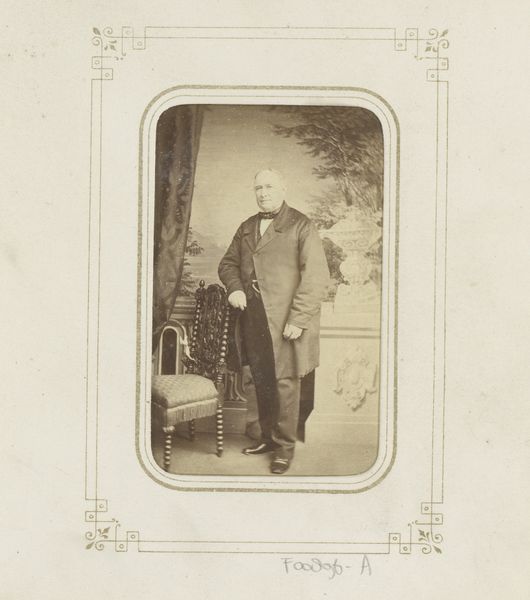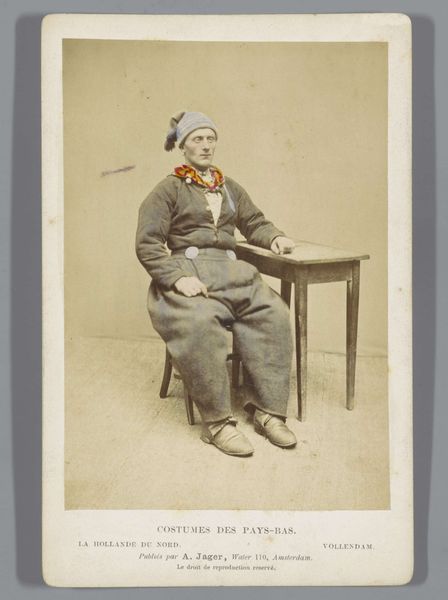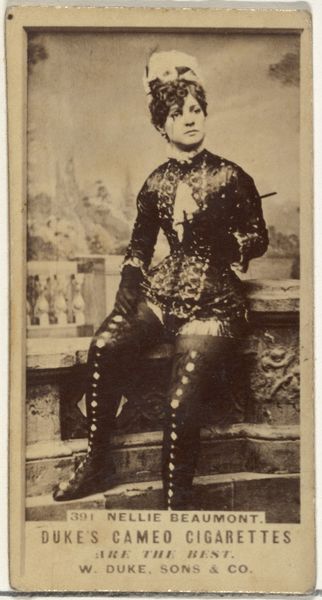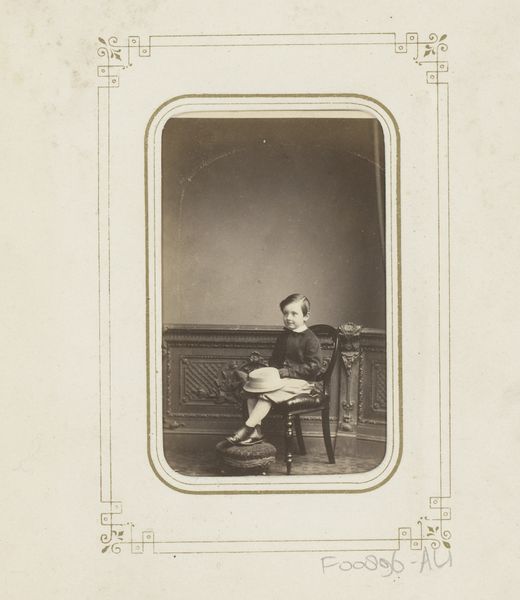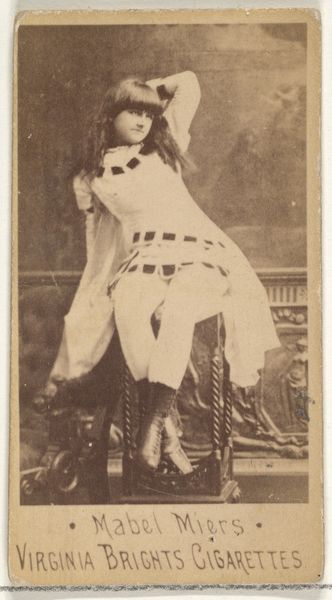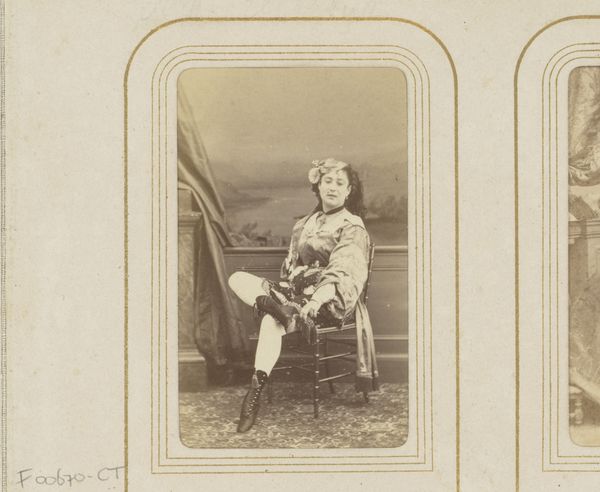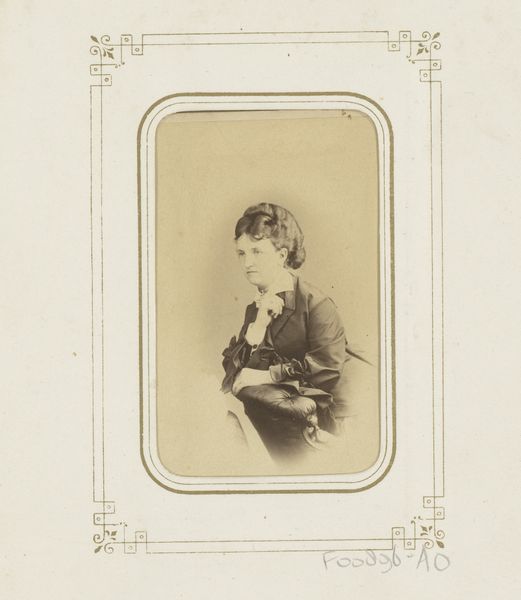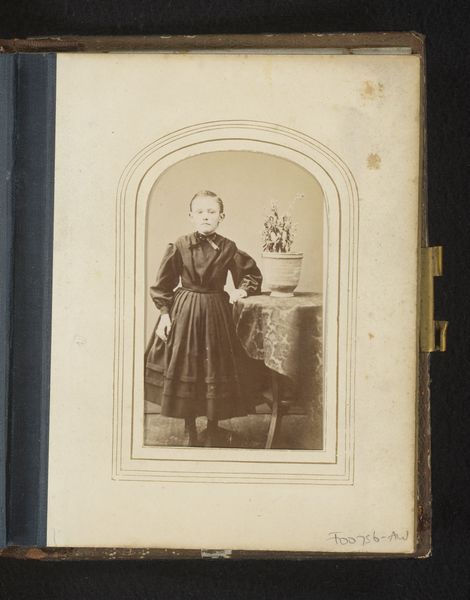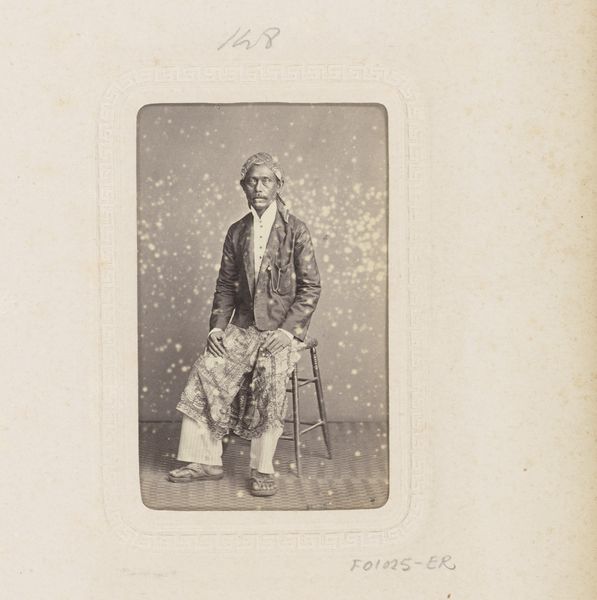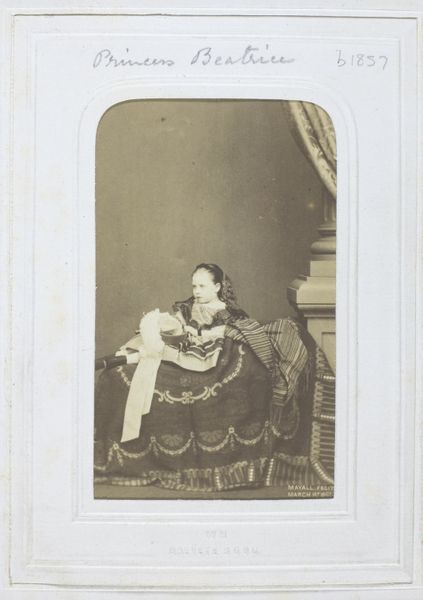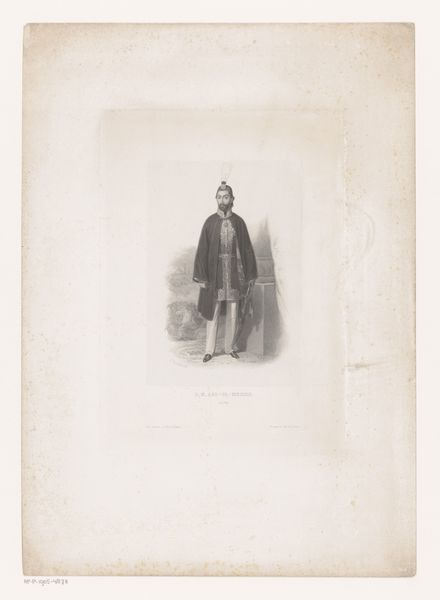
print, photography
#
portrait
# print
#
photography
#
realism
Dimensions: 8.6 × 5.4 cm (image/paper); 10.4 × 6.2 cm (mount)
Copyright: Public Domain
Editor: Here we have André-Adolphe-Eugène Disdéri's "Marshal Caurohert," a photographic print from the 1860s, residing here at the Art Institute of Chicago. The subdued sepia tones and posed composition create a mood of reserved dignity. What do you see in this piece that might not be immediately apparent? Curator: Structurally, the photograph operates on a series of carefully arranged horizontals and verticals, establishing a balanced, almost rigid, pictorial space. The marshal's body, bisected by the walking stick, presents two distinct triangular forms. The upper triangle, framed by his gaze and top hat, contrasts subtly with the lower, dominated by the angled leg. Do you notice how this deliberate composition contributes to the overall feeling of composed authority? Editor: I do now! It’s like the photograph is trying to contain him, in a way. Is there anything else you find compelling in terms of its pure visual form? Curator: Certainly. Observe the play of light and shadow. Note how the light gently models his face, directing our gaze, while the shadows, especially those cast by the furniture and within the folds of his clothing, create depth and dimension, transforming a flat surface into a three-dimensional space. Disdéri masterfully uses tonality to articulate form. The contrast is subtle, yet profound. Editor: This deeper dive has been eye-opening, noticing how formal aspects really influence the whole experience of looking at a photograph. Thanks! Curator: Indeed, examining form illuminates function. Focusing on visual strategies yields a richer interpretation.
Comments
No comments
Be the first to comment and join the conversation on the ultimate creative platform.
